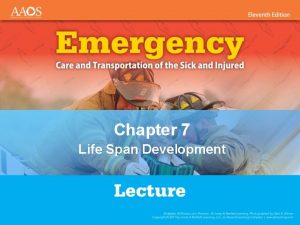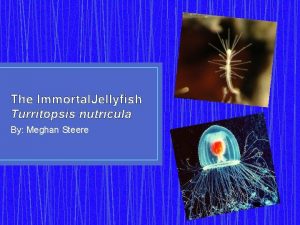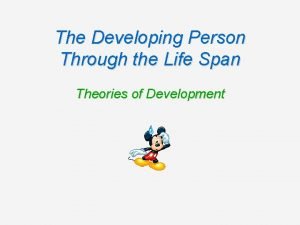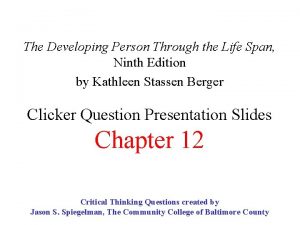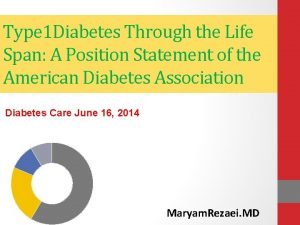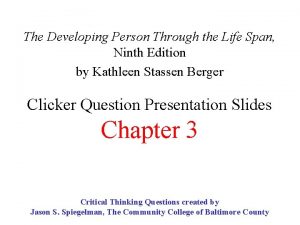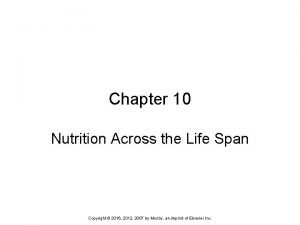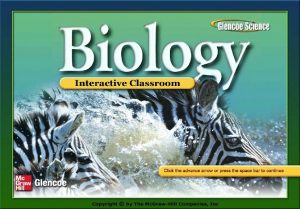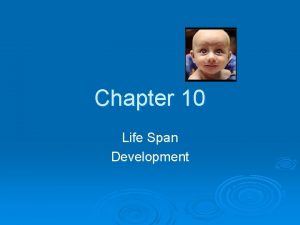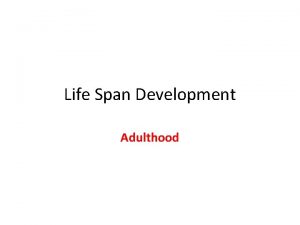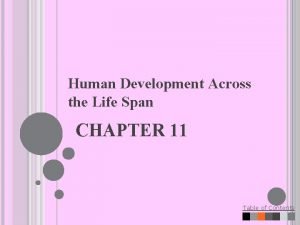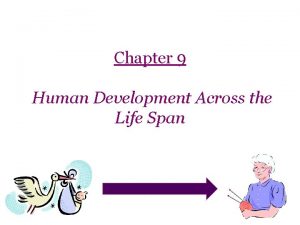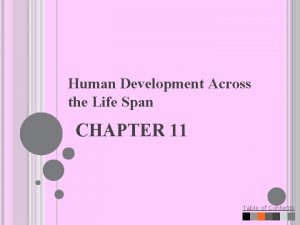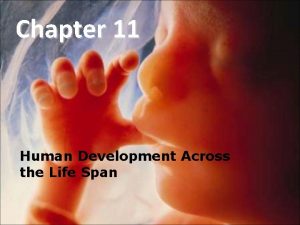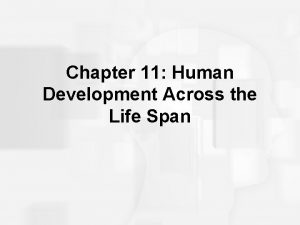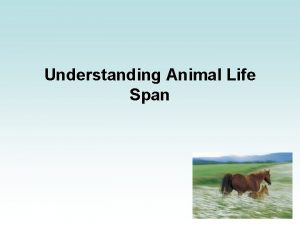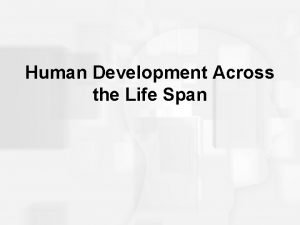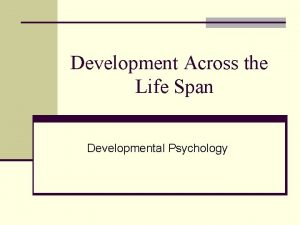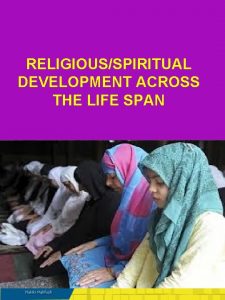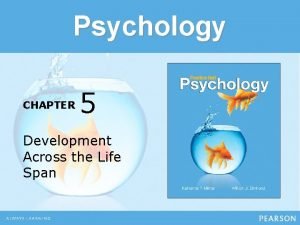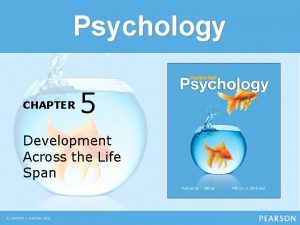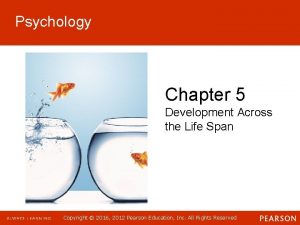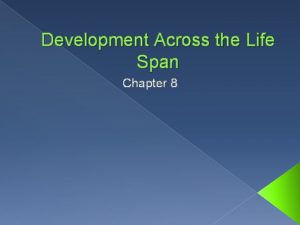Chapter 10 Human Development Across the Life Span





















- Slides: 21

Chapter 10: Human Development Across the Life Span

Progress Before Birth: Prenatal Development 3 phases _____ stage = first 2 weeks conception, ______, formation of placenta ______ stage = 2 weeks – 2 months formation of vital ____ and systems _______ stage = 2 months – birth bodily growth continues, _____ capability begins, brain _____multiply age of ____

Figure 10. 1 Overview of fetal development

Environmental Factors and Prenatal Development Maternal _____ Malnutrition linked to increased risk of birth complications, ______ problems, and _______ Maternal ____ use Tobacco, alcohol, ____, and recreational drugs ________ syndrome

Environmental Factors and Prenatal Development Maternal _______ Rubella, ____ , mumps, genital herpes, ______, severe influenza Prenatal _______ care Prevention through _____

The Childhood Years: Motor Development Basic Principles ______ trend – head to foot ______trend – center-outward _____ – gradual unfolding of genetic blueprint Developmental ______ – median age Cultural variations

Early Emotional Development: Attachment _________ (1979) The ________ and patterns of attachment Secure Anxious-ambivalent _______

Becoming Unique: Personality Development Stage theories, three components progress through stages in ______ progress through stages related to _____ major _____ in development ______ (1963) _____ stages spanning the lifespan ______ crises determining balance between opposing polarities in personality

Figure 10. 5 Stage theories of development

Figure 10. 6 Erikson’s stage theory

The Growth of Thought: Cognitive Development _______ (1920 s-1980 s) _______/ Accommodation 4 stages and major milestones ________ Object permanence ________ Centration, Egocentrism ___________ Decentration, Reversibility, Conservation ___________ Abstraction

Figure 10. 7 Piaget’s stage theory

Figure 10. 8 Piaget’s conservation task

Evaluating Piaget’s Theory Criticisms Piaget _________ children’s abilities Problems with ______ theories Universality Vygotsky’s _______ theory Are some _____ abilities innate?

The Development of Moral Reasoning _____ (1976) Reasoning as opposed to behavior _______ Measured nature and progression of moral reasoning 3 levels, each with 2 sublevels _______ Conventional _______

Figure 10. 10 Kohlberg’s stage theory

Adolescence: Physiological Changes _______ Secondary sex characteristics Primary sex characteristics Menarche Sperm production Maturation: _____ vs. _____ Sex differences in effects of early maturation

Figure 10. 12 Physical development at puberty

Adolescence: Neural Changes Increasing _______ Changes in _____ cortex

The Search for Identity Erik _______ (1968) Key challenge - forming a sense of ______ James _____ (1988) Four identity statuses Identity ____ Identity foreclosure Identity _____ Identity achievement

The Expanse of Adulthood ______ development Career development _____ changes Cognitive changes
 Chapter 7 life span development
Chapter 7 life span development Human needs and human development chapter 8
Human needs and human development chapter 8 Chapter 8 human needs and human development
Chapter 8 human needs and human development Painted lady butterfly life span
Painted lady butterfly life span Turritopsis nutricula
Turritopsis nutricula Eagle longest lifespan
Eagle longest lifespan A systematic statement of principles and generalizations
A systematic statement of principles and generalizations The developing person through the life span 9th edition
The developing person through the life span 9th edition Honeybee lifecycle
Honeybee lifecycle Petit fours base
Petit fours base Project life span
Project life span The developing person through the lifespan
The developing person through the lifespan Ozymandias summary line by line
Ozymandias summary line by line Life span type 1 diabetes
Life span type 1 diabetes The developing person through the life span 9th edition
The developing person through the life span 9th edition Gni definition ap human geography
Gni definition ap human geography Limitations of pqli
Limitations of pqli Genetic effects on gene expression across human tissues
Genetic effects on gene expression across human tissues Patterns of development in writing across disciplines
Patterns of development in writing across disciplines Chapter 10 nutrition
Chapter 10 nutrition Chapter 5 diversity and human needs and development
Chapter 5 diversity and human needs and development Chapter 36 section 2 human development before birth
Chapter 36 section 2 human development before birth
